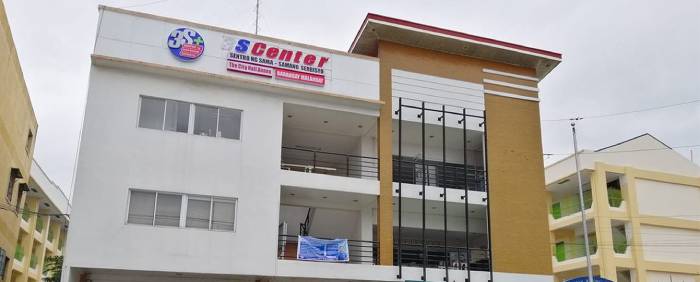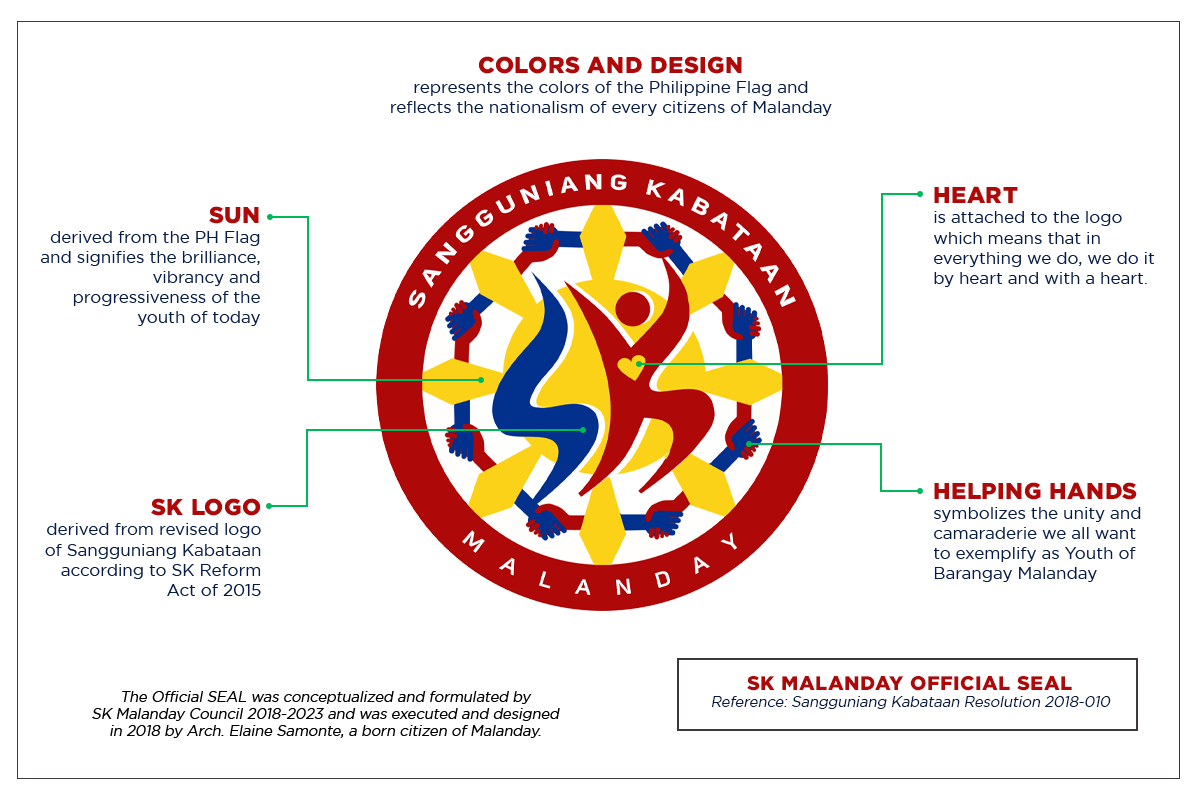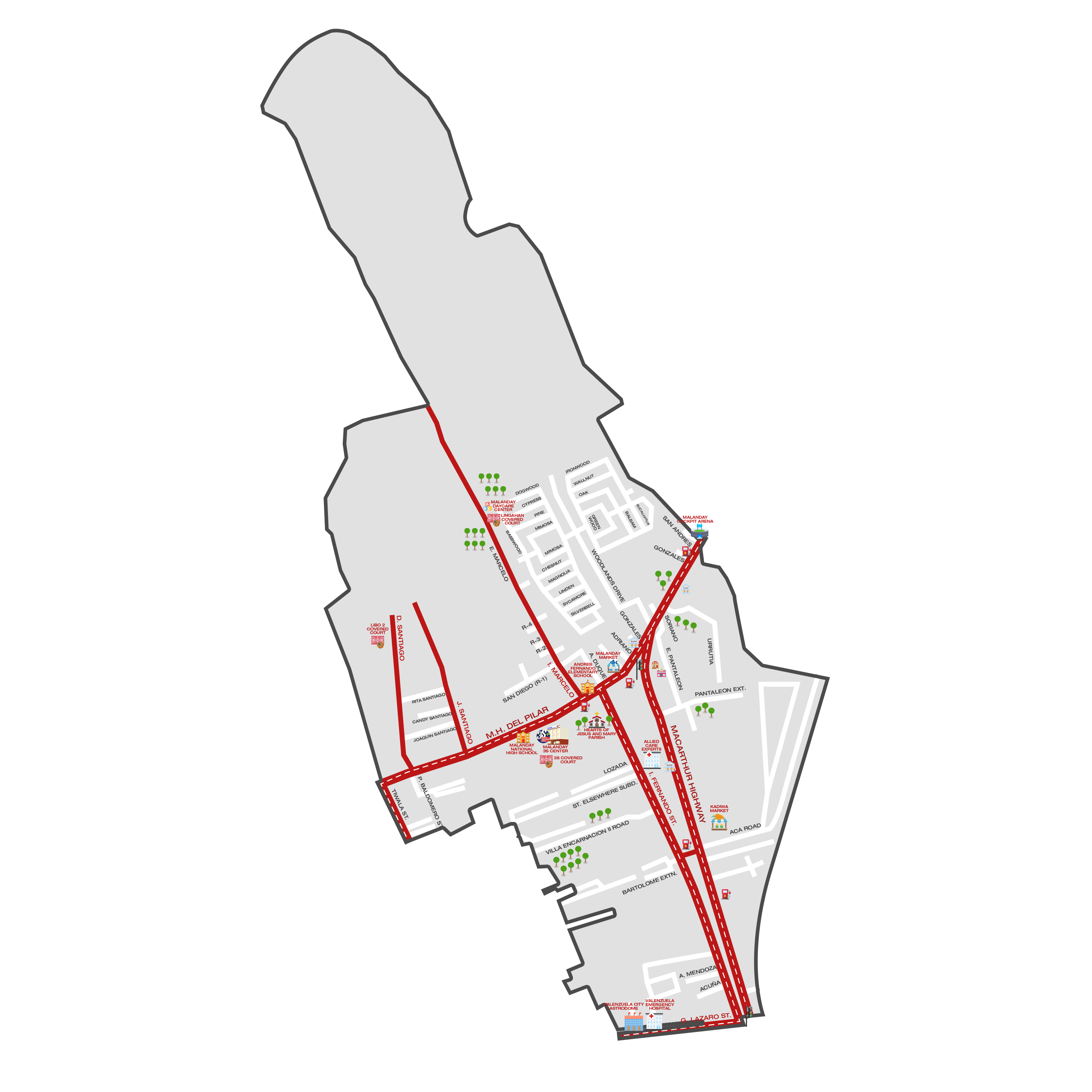
“Manong” ang nakagawiang itawag sa mga nagmamaneho ng Pedicab/Sidecar/Trike (mga kilalang tawag sa uri ng transportasyon na ito) na siyang isa sa mga pangunahing hanap buhay sa Barangay Malanday.
Abot-kamay na pamilihan, pagamutan at pangkabuhayan -- bagsakan ng sariwang bilihin, maayos at malinis na pribadong ospital at angkatan ng mga produkto sa iba’t ibang pabrika ang sa Malanday ay matatagpuan.
Lapis at Libro naman ang sumisimbolo sa edukasyon na isa sa mga isinusulong na palakasin at pagyabungin ng Sangguniang Kabataan sa pamamagitan ng iba’t ibang uri ng proyekto na tumutugon sa pangangailangan ng bawat Kabataang Malanday.
Akap ng isang pamilya ang naglalarawan sa pagdadamayan ng bawat mamamayan sa Malanday.
Narra ang punong namumulaklak tuwing Abril (April Shower Tree) sa patio ng simbahan ng Malanday hudyat na malapit na ang Kapistahan ng Señor Santo Kristo na siyang patron ng barangay. Malalim na pagdedebosyon, pamimintuho at pananampalataya ang namana ng mga mamamayan ng Malanday sa pamamagitan ng patron nito.
Dahon na luntian ang sumasagisag sa buhay ng kalikasan na maituturing na likas na yaman kung kaya't ito ay iniingatan at pinahahalagahan sa aming barangay kasama rin ang mga ibong lumilipad, sariwang hangin na hatid ng bakawan at mga isdang lumalangoy sa mga palaisdaan.
Andres Fernando ang tanyag na ngalan sa aming barangay. Siya’y tubong Malanday at nanilbihan ng bilang alkalde ng Valenzuela taong 1931-1937 at 1940-1942. Halaw din sa kanyang ngalan ang mababang paaralan o paaralang elementarya dito sa Malanday.
“Youth” o kabataan ang sigla ng bawat pamayanan. Dito sa Malanday, yaman ang bawat kabataan dahil sa taglay nilang liksi sa pampalakasan, husay sa mga talento, galing sa anumang paligsahan at talino sa kanilang propesyon.
Ito ang bumubuo ng aming simpleng pamayanan. Ito ang naglalarawan ng aming pamumuhay at kayamanan. Ito ang Barangay Malanday sa Lungsod ng Valenzuela.

When the Spaniards arrived to establish the town Polo in the early 1600, the sitio of Malanday was very sparsely populated. The region was covered by trees and tall grass and in the west there was lonely marshland irrigated by a river, the main stream of which flows directly to the Manila Bay.
Gradually, enterprising people from the poblacion and sitios near it migrated to the places to till the semi-jungle land and build their homes for good. Among them are the Urrutia, Duque, De Vega, San Andres, Bartolome, Chongco and Concepcion families who establish their homes and to this day, their descendants still predominate the place.
The land has been subdivided, but a big portion of the barrio was acquired by the Malinta Estate, a religious corporation which at that time has a big hacienda on the barrio of Malinta and by the Lolomboy Estate, which also has big buildings in the barrio of Lolomboy, Bocaue. Only small portions were left to the inhabitants and to this day, the said portions are well known as Lupang Tagalog.
The industry and patience of the people paid well in the establishments of well cultivated rice and sugar cane fields and the founding of fishponds, where once there were only marshlands and mangrove trees. Among the Cabeza de Barangay, the following can be recalled to memory, Fernando Duque, Espiridion Urrutia, Aguedo Bartolome and Leon Urrutia.
This barrio has also a share in the in the struggle of the Katipunan against the misrule of Spain. Among them can be cited Faustino Duque, who with Bonifacio and Jacinto founded the Press of the Katipunan, among the stalwarts of the local members of the army of the Revolution against Spain can be mentioned Captain Andres Pacheco and Lt. Alfonso Nicholas.
When the American came and civil government has been established, this barrio has also its share of a number of officials who did well in guiding the destinies of the town, among them were Andres Fernando who became Town Mayor for two times, Juan Santiago who became Vice-Mayor and Councilor and Ireneo Marcelo and Roman Cruz who became Councilors.
During the Japanese occupation, many young men of the barrio joined the resistance movement and among them maybe cited: Capt. Romulo Fernando, Lt. Prisco Alipio, Filomeno Eulogio, Zacarias Chongco, Carlos Del Mundo, and Jacob Garcia.
Malanday took its name from the Tagalog word of its equivalent in English which means “Hollow Flat”. Malanday itself is flatland and is part of the great expanse of the Central Luzon plain.
Barangay Malanday is located in the City of Valenzuela, and its boundaries are: Brgy. Bancal, Meycauayan City, Bulacan in the North, Brgy. Dalandanan, Valenzuela City in the South, Brgy. Veinte Reales, Valenzuela City in the East and Brgy. Coloong, Valenzuela City in the West.


